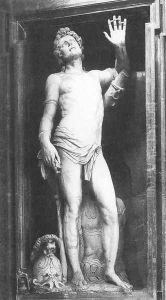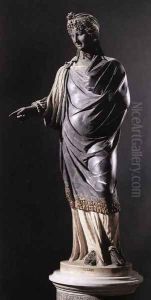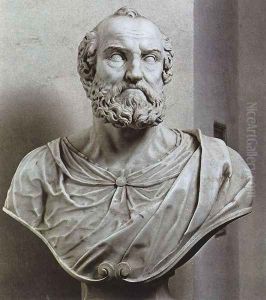Nicolas Cordier Paintings
Nicolas Cordier, also known by his French nickname Nicolas de Barre, was a French sculptor who was born in 1567 in Saint-Mihiel, a small town in the Duchy of Bar, which is now part of modern-day France. Cordier was one of the notable figures in the transition from Mannerist to Baroque sculpture. His works are characterized by their dynamic forms, elegant drapery, and the incorporation of colored marbles and stones, which was relatively innovative at the time.
In his early years, Cordier likely received his artistic training in France. However, he spent the majority of his professional life in Italy, particularly in Rome, which was a center for artistic innovation during the late Renaissance. By moving to Italy, Cordier was exposed to the works of prominent artists and the classical antiquities that would greatly influence his style and technique. He was active during the pontificate of Pope Paul V and received commissions from several high-ranking prelates, which signified his recognition and success as an artist.
Cordier’s work includes a number of significant religious sculptures. One of his most famous works is the statue of Saint Paul for the Basilica of Santa Maria Maggiore in Rome, which showcases his skill in working with variously colored marbles to create lifelike flesh tones. Another notable work is the 'Four Doctors of the Church,' a group of sculptures that also demonstrates his ability to imbue stone with a sense of vitality and movement.
Despite his contributions to the evolution of sculpture during his time, Nicolas Cordier is not as well-known as some of his contemporaries. He died in Rome in 1612, having left behind a body of work that reflects the transitional period of European art, where the exaggerated forms of Mannerism began to give way to the more dramatic and emotional style of the Baroque. Today, Cordier's works can be found in several churches in Rome as well as in art collections that specialize in Renaissance and Baroque sculpture.


